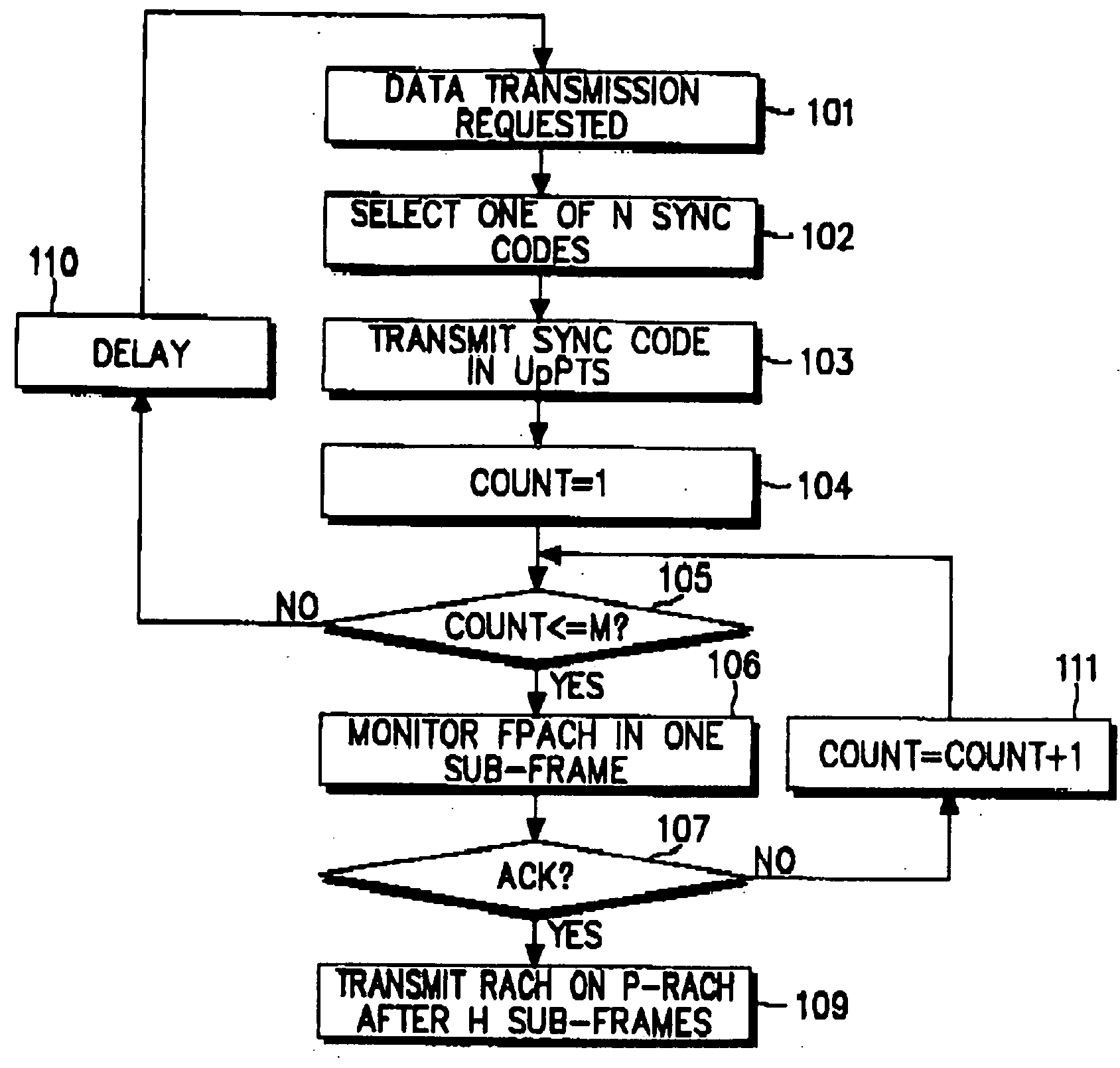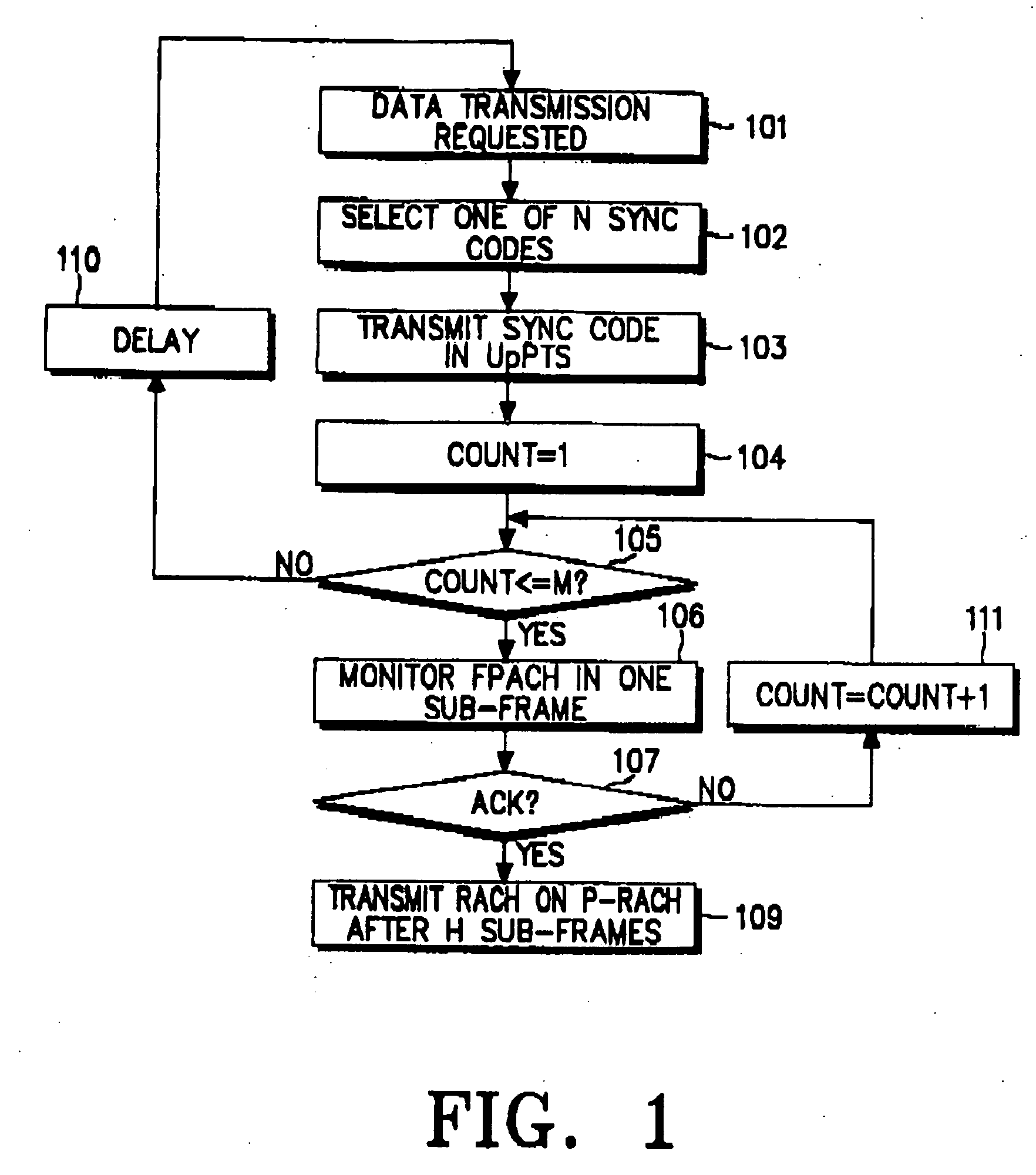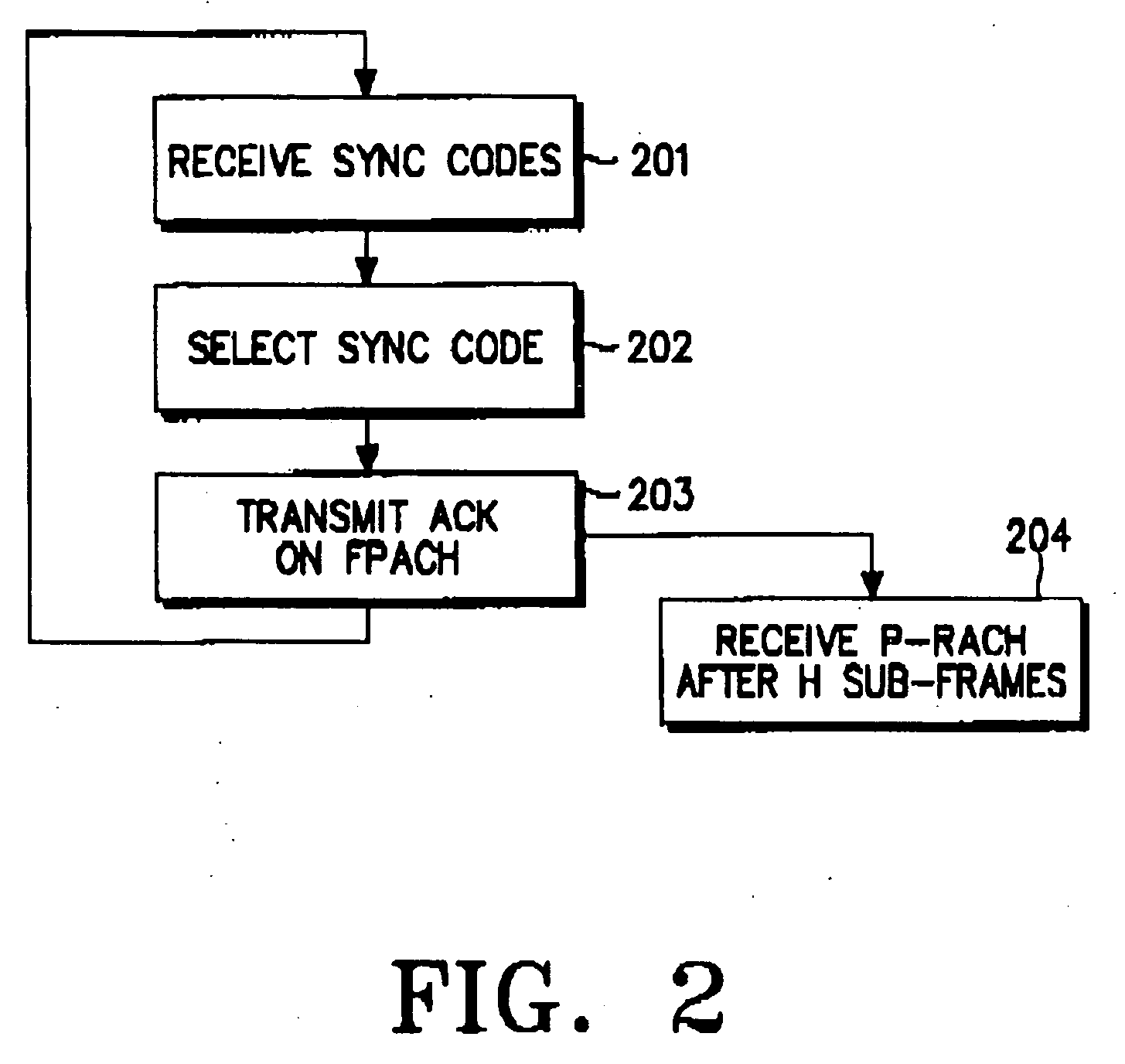Method of assigning an uplink random access channel in a CDMA mobile communication system
a mobile communication system and random access technology, applied in power management, synchronisation arrangement, wireless commuication services, etc., can solve the problems of less sync1 codes available and increased channel collision probability, and achieve the effect of efficient channel us
- Summary
- Abstract
- Description
- Claims
- Application Information
AI Technical Summary
Benefits of technology
Problems solved by technology
Method used
Image
Examples
third embodiment
[0038] In accordance with a random access procedure according to the present invention, an I_FPACH signal is used to reduce the complexity for evaluating all of FPACHs and efficiently use forward resources as compared to the conventional RACH assignment method.
[0039]FIG. 1 is a flowchart illustrating a procedure of acquiring a P-RACH on which to transmit data to a UTRAN in a UE according to an embodiment of the present invention. Referring to FIG. 1, the UE has RACH data to be transmitted in step 101. Here, it is assumed that the UE has primarily acquired downlink synchronization and received RACH transmission associated information beforehand from the UTRAN. Information about N sync codes available to the UE can be received from the UTRAN beforehand or from preset codes. In step 102, the UE selects one of the N sync codes. An upper layer may set N. N can be a constant, for example, 8. If N is 8, it is preferable to use all the eight given sync codes to avoid channel collision. In s...
second embodiment
[0070] In the random access procedure according to the present invention, the UTRAN transmits information about the numbers of FPACHs .and P-RACHs per sub-frame and the corresponding relationship between the FPACHs and the P-RACHs. The types and number of available sync codes may be preset or determined by the UTRAN and included in the UTRAN information (stage 1). The UE determines the length of a reception period, that is, the number of sub-frames to be monitored for an ACK based on the number of sync codes and the number of FPACHs or P-RACHs. The number of sync codes is the total number of available sync codes. One sync code may correspond to one FPACH or P-RACH or a group of sync codes may correspond to one FPACH or P-RACH. In the latter case, A in equation (1) becomes the number of sync code groups (stage 2). The UE transmits a selected sync code in a UpPTS of a sub-frame and receives a corresponding FPACH (stage 3). After receiving sync codes in UpPTSs, the UTRAN selects one of...
PUM
 Login to View More
Login to View More Abstract
Description
Claims
Application Information
 Login to View More
Login to View More - R&D
- Intellectual Property
- Life Sciences
- Materials
- Tech Scout
- Unparalleled Data Quality
- Higher Quality Content
- 60% Fewer Hallucinations
Browse by: Latest US Patents, China's latest patents, Technical Efficacy Thesaurus, Application Domain, Technology Topic, Popular Technical Reports.
© 2025 PatSnap. All rights reserved.Legal|Privacy policy|Modern Slavery Act Transparency Statement|Sitemap|About US| Contact US: help@patsnap.com



